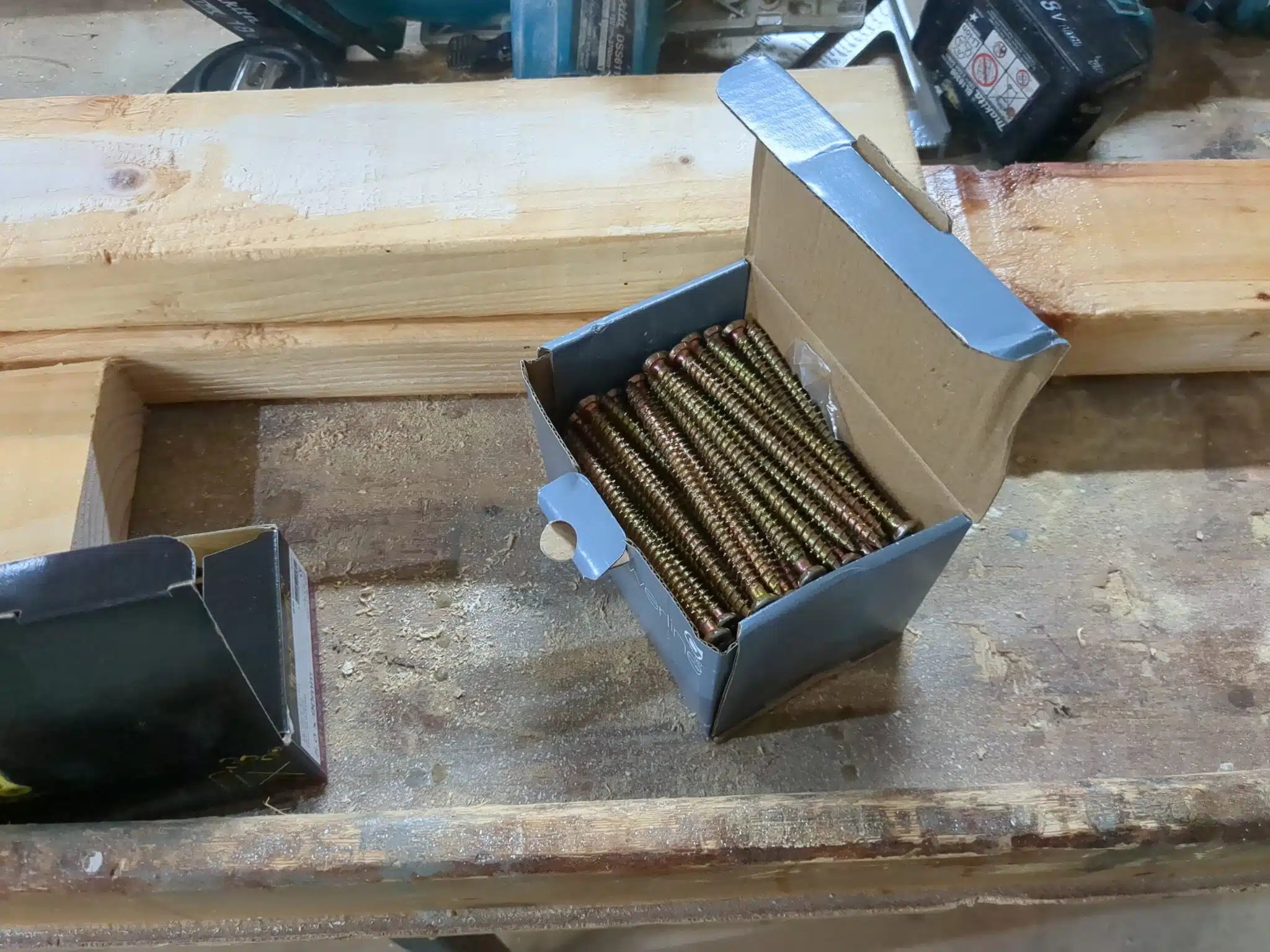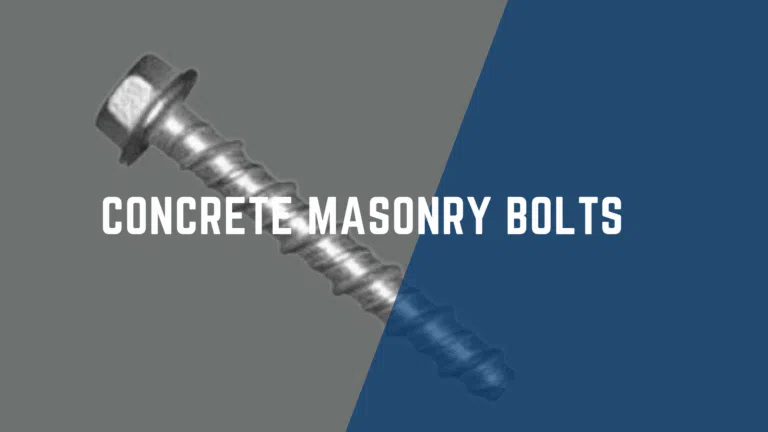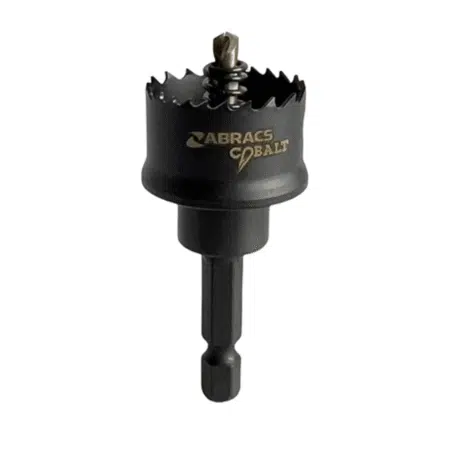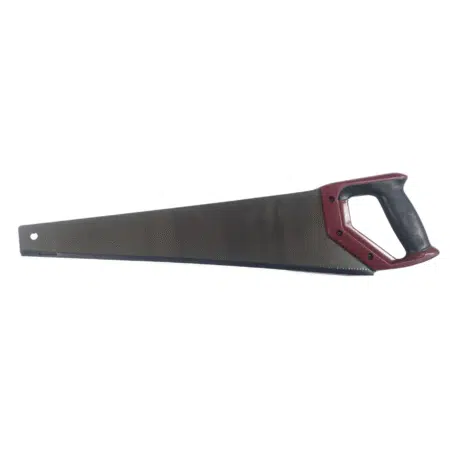Most DIY enthusiasts and professionals will encounter the need to install concrete masonry screws at some point, whether for securing fixtures or in construction projects. Understanding the correct installation method is vital to ensure durability and safety. In this post, you will discover a guide through the entire process, equipping you with the knowledge to achieve a strong and secure fix in various concrete applications. Get ready to enhance your skillset and tackle your next project with confidence!
Concrete Masonry Screws Key Takeaways:
- Preparation: Ensure the surface is clean and free of dust or debris before installation.
- Drilling: Use the appropriate drill bit for creating a pilot hole in the concrete masonry for optimal screw insertion.
- Using Anchors: Consider using anchors if the screw needs additional support in softer materials.
- Installation Technique: Drive the concrete masonry screws straight and apply steady pressure for effective embedding.
- Tools Required: Have the necessary tools on hand, including a hammer drill and a screwdriver, for efficient installation.
Understanding Concrete Masonry Screws
For any construction or DIY project involving concrete, understanding concrete masonry screws is imperative. These screws are specially designed to anchor securely into concrete and masonry, providing a strong hold for fixtures and installations. Their versatility makes them a popular choice among builders and homeowners alike, ensuring that your tasks are not only efficient but also structurally sound.
What are Concrete Masonry Screws?
Across various construction opportunities, concrete masonry screws serve as reliable fasteners, specifically engineered to be driven directly into concrete or masonry without the need for plugs. This makes them an efficient solution for anchoring and securing various materials and fixtures. Their unique thread design allows for superior grip, ensuring a sturdy and long-lasting installation.
Types of Concrete Masonry Screws
Among the different varieties of concrete masonry screws, you will find options tailored to specific applications. The most common types include:
| Standard Concrete Screws | General purpose, ideal for most applications. |
| Self-tapping Screws | No pre-drilling required, simplifies installation. |
| Heavy-duty Screws | Designed for increased load-bearing capacity. |
| Coated Screws | Corrosion-resistant, suitable for outdoor use. |
| Shouldered Screws | Provides an additional layer of support. |
Knowing the type of concrete masonry screws best suited for your project can greatly influence the outcome. Each option offers various benefits tailored to the requirements of specific applications, ensuring that you can achieve optimal results.
The range of concrete masonry screws available today caters to various needs, allowing you to select the best fit for your application:
| Length | Availability ranges from 1.5 to 6 inches. |
| Diameter | Sizes typically range from ¼ inch to ½ inch. |
| Material | Commonly made from steel, stainless steel, or brass. |
| Finish | Can be coated or uncoated based on use. |
| Thread Design | Varies for different anchoring strengths and materials. |
The versatility of concrete masonry screws ensures that your projects stay on track, providing the necessary strength and durability for your installations. Knowing their different characteristics can aid you in making informed decisions regarding your tools and materials.
Tools and Materials Needed
The installation of concrete masonry screws requires specific tools and materials to ensure a successful outcome. Having the right items on hand will streamline the process and yield the best results, allowing you to tackle your project with confidence.
Essential Tools

Required Materials

With concrete masonry screws, it’s important to choose the right size and type for your application. Make sure to check the load-bearing capacity to ensure it meets your needs. Furthermore, always have extra screws on hand in case of any mishaps during installation. Properly selected screws will help prevent failure or damage to your materials, ensuring a sturdy and permanent fit.
Preparation for Installation
Now that you’ve gathered your tools and materials, it’s time to prepare for the installation of concrete masonry screws. This involves ensuring the surface is clean, dry and ready for your fasteners, which will enhance the durability and strength of your project. Take your time to perform proper assessment and marking, as these steps can significantly impact the overall outcome of your installation.
Assessing the Surface
Beside ensuring your workspace is safe, you should thoroughly assess the surface where you intend to install the screws. Look out for any cracks, debris, or loose material that may interfere with the fastening process, as these can diminish the effectiveness of your installation. A stable, solid surface will lend more strength to your project.
Marking Drill Points
Any successful installation begins with accurately marking your drill points. Identifying precise locations for the screws will not only enhance aesthetics but also ensure that they are installed securely. This step prevents misalignment that could lead to unnecessary structural issues.
It is important to use a pencil or marker to clearly indicate each drill point, paying attention to your measurements to ensure accuracy. If you’re using multiple screws, maintain a consistent pattern for a professional finish. Using a level or square can help prevent misalignment, which is vital for achieving optimal strength. Additionally, verifying the distances and alignment from nearby structures can lead to a safe and effective installation, preventing any potential hazards that may arise from improper placement.
Installation Process
Despite its seemingly straightforward approach, installing concrete masonry screws requires attention to detail and precision to ensure a secure and long-lasting hold. By following the steps outlined in this tutorial, you will achieve professional results that can withstand the test of time.
Drilling Holes
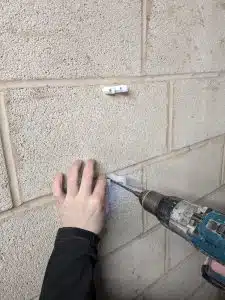
Inserting the Concrete Masonry Screws
Installation of the screws must be handled carefully to ensure proper anchorage. You should insert the screws into the pre-drilled holes with a steady hand, making sure they are aligned correctly.
This process not only secures your materials but also protects against potential damage caused by misalignment. Always wear safety goggles to shield your eyes from debris and operate your tools with care to prevent accidents. Adequate pressure ensures that the screws grip well, providing a strong anchor in the concrete, so your results will last.
Tips for Successful Installation
After you’ve chosen the appropriate concrete masonry screws, it is important to follow these tips for a successful installation:
- Ensure a clean and dry surface for maximum adhesion.
- Use a power drill with the correct drill bit size.
- Pre-drill holes if necessary to avoid cracking.
- Apply consistent pressure while driving in the screws.
- Check the depth to ensure secure fastening.
Any installation effort will yield better results with attention to these details.
Common Mistakes to Avoid
One of the key mistakes people make is choosing the wrong size of concrete masonry screws, which can lead to inadequate holding power. Failing to clean the surface can also affect adherence, so ensure your installation area is free of debris.
Best Practices for Durability
Before you start, it’s important to consider the environment where the concrete masonry screws will be used.
Practices such as selecting the right type of screw finish based on exposure to moisture and environmental elements can significantly enhance durability. For outdoors, consider galvanised or stainless steel screws to prevent rusting. Additionally, always use appropriate anchors or washers to distribute the load effectively, which will enhance the longevity of your installation.
Troubleshooting Common Issues
Many homeowners encounter common issues when installing concrete masonry screws. Being prepared to troubleshoot these problems can save you time and ensure a successful installation. Paying attention to misalignment, screw breakage, and other challenges can help you understand how to effectively remedy these situations and achieve a secure fix.
Misalignment Problems
After identifying any misalignment issues during installation, adjust the screw by repositioning it before tightening down. Ensuring that the drill hole is straight and properly aligned with the screw can prevent unnecessary strain on the fastener and provide a more secure hold.
Screw Breakage Solutions
Misalignment or using the wrong size screw can lead to breakage during installation. If a screw breaks, carefully remove the broken piece and drill a new hole nearby, ensuring it is at the correct angle. Opt for high-quality masonry screws designed for your specific application, as this can significantly reduce the chance of breakage.
Issues with screw breakage can be hazardous, as loosening screws compromise the stability of your project. For your safety, always use the correct drill bit size to avoid excessive force that can lead to fractures. Additionally, choosing robust materials and properly preparing your concrete surface reinforces your installation, minimising the risk of screws snapping under load. If you consistently face breakage, consider upgrading to premium screws designed for tough conditions.
To wrap up
Hence, by following the comprehensive video tutorial on how to install concrete masonry screws, you can ensure a strong and secure fastening for your projects. This step-by-step guide equips you with the necessary skills and knowledge to choose the right screws and correctly install them, enhancing the durability of your work. With practice, you will become proficient in utilising concrete masonry screws, making your DIY tasks smoother and more efficient. Now, you have the tools to tackle any concrete fastening challenge with confidence.
Concrete Masonry Screws FAQ
Q: What materials do I need to install concrete masonry screws?
A: To install concrete masonry screws, you will need the following materials: concrete masonry screws (specifically designed for use in concrete), a hammer drill with appropriate masonry drill bits, a masonry anchor (if required for added support), a screwdriver or impact driver, and personal protective equipment such as safety glasses and gloves. It’s also helpful to have a measuring tape and a level for accurate installation.
Q: How do I determine the proper size of concrete masonry screw to use?
A: The size of the concrete masonry screw you need will depend on the weight of the object you are securing and the thickness of the material being anchored into the concrete. Typically, larger screws are required for heavier items. Consult the manufacturer’s guidelines for the specific weight capacities of different screw sizes. It is advisable to select a screw length that allows for a minimum of 1 inch (25 mm) of penetration into the concrete for optimal holding strength.
Q: Can I install concrete masonry screws without pre-drilling holes?
A: It is generally recommended to pre-drill holes when installing concrete masonry screws. Pre-drilling helps to create a precise entry point for the screw, reducing the risk of cracking or damaging the surrounding concrete. Using the correct size drill bit as specified for the screw is crucial to ensure a proper fit. Some screws are designed for direct installation without pre-drilling, but for the best results and ease of installation, pre-drilling is usually the preferred method.

